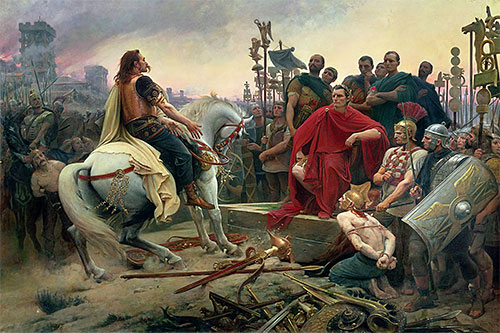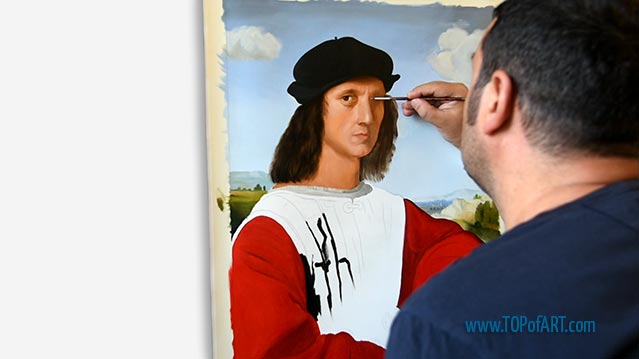Vercingetorix Throws down his Arms at the Feet of Julius Caesar, 1899 Lionel Royer (1852-1926)
Location: Musee Crozatier Le Puy-en-Velay FranceOriginal Size: 482 x 321 cm
Oil Painting Reproduction
If you want a different size than the offered
Description
Painted by European Аrtists with Academic Education
Museum Quality
+ 4 cm (1.6") Margins for Stretching
Creation Time: 8-10 Weeks
Creation Process
We create our paintings with museum quality and covering the highest academic standards. Once we get your order, it will be entirely hand-painted with oil on canvas. All the materials we use are the highest level, being totally artist graded painting materials and linen canvas.
We will add 1.6" (4 cm) additional blank canvas all over the painting for stretching.
High quality and detailing in every inch are time consuming. The reproduction of Lionel Royer also needs time to dry in order to be completely ready for shipping, as this is crucial to not be damaged during transportation.
Based on the size, level of detail and complexity we need 8-10 weeks to complete the process.
In case the delivery date needs to be extended in time, or we are overloaded with requests, there will be an email sent to you sharing the new timelines of production and delivery.
TOPofART wants to remind you to keep patient, in order to get you the highest quality, being our mission to fulfill your expectations.
We not stretch and frame our oil paintings due to several reasons:
Painting reproduction is a high quality expensive product, which we cannot risk to damage by sending it being stretched.
Also, there are postal restrictions, regarding the size of the shipment.
Additionally, due to the dimensions of the stretched canvas, the shipment price may exceed the price of the product itself.
You can stretch and frame your painting in your local frame-shop.
Delivery
Once the painting Vercingetorix Throws down his Arms at the Feet of Julius Caesar is ready and dry, it will be shipped to your delivery address. The canvas will be rolled-up in a secure postal tube.
We offer free shipping as well as paid express transportation services.
After adding your artwork to the shopping cart, you will be able to check the delivery price using the Estimate Shipping and Tax tool.
Museum Quality
The paintings we create are only of museum quality. Our academy graduated artists will never allow a compromise in the quality and detail of the ordered painting. TOPofART do not work, and will never allow ourselves to work with low quality studios from the Far East. We are based in Europe, and quality is our highest priority.
Additional Information
Royer places Caesar, cloaked in red, perched on a platform that feels almost like a throne, exuding a calm authority. He’s not looking at Vercingetorix; instead, his eyes are elsewhere, a mix of disinterest and dominance that feels almost cruel. The conqueror’s nonchalance contrasts sharply with the defiance still burning in the defeated Vercingetorix, who sits tall on his white horse. His body might suggest surrender - arms lowered, sword cast down - but there’s a rigid pride in the way he still faces Caesar.
The colors Royer chose enhance this contrast. The rich red of Caesar’s cloak radiates power, drawing the viewer’s attention repeatedly back to him, while the cooler whites and earthy tones of Vercingetorix feel more muted, as if fading into the background of defeat. Yet, despite this, Vercingetorix doesn’t disappear - he remains a strong, almost monumental figure, his posture dignified.
Royer’s technique, with its precise details in armor, the gleaming spears, and the clutter of discarded weapons, is almost classical. The meticulous rendering of the textures makes the moment feel hyper-real, yet it’s the carefully calculated use of light and shadow that makes the emotional narrative sing. Caesar is bathed in light, his figure sharply delineated, while Vercingetorix and his followers fall into a softer, more ambiguous light, as if already becoming part of history’s past.
The composition is crowded but purposeful - Roman soldiers, standards, and even spectators pack the space. Yet it never feels chaotic. Royer’s careful arrangement ensures that every figure and detail plays its part in this grand choreography of conquest and submission. It’s a painting that lingers, demanding attention, forcing us to consider the nature of victory and the silent weight of defeat.

